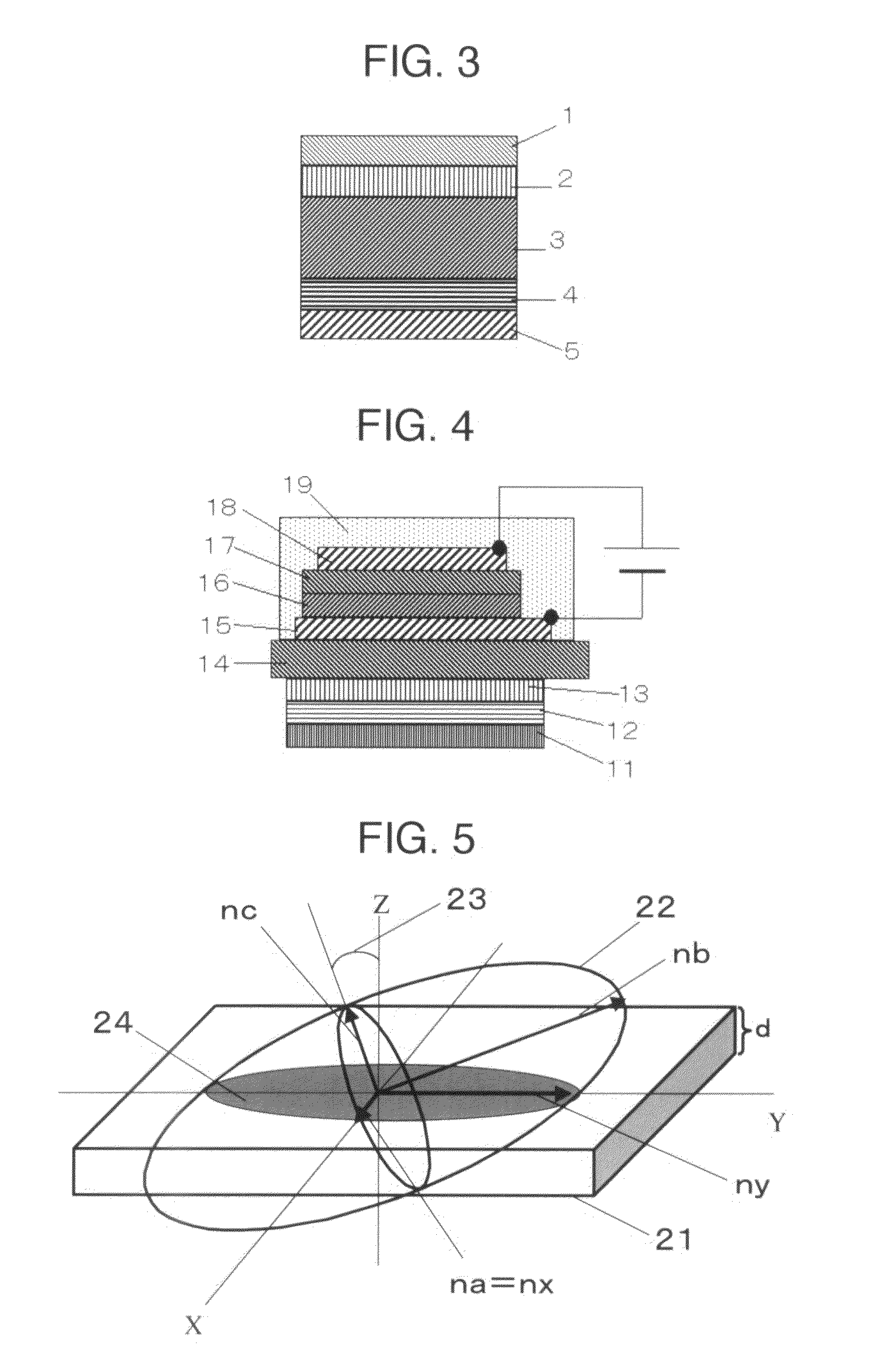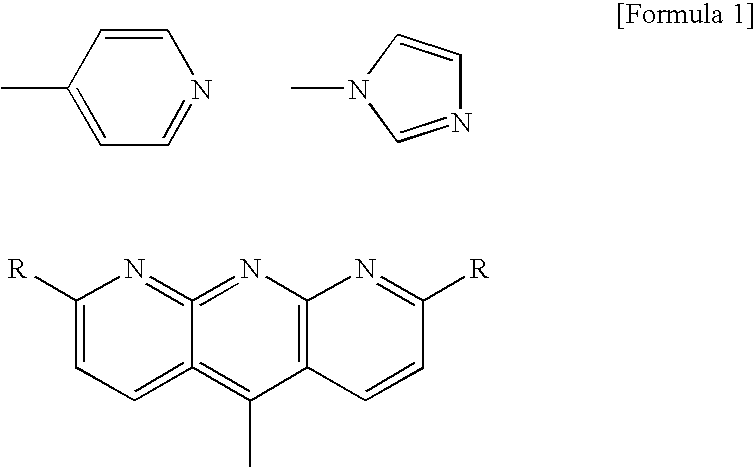Films and Processes for Producing the Same
a technology of film and process, applied in the field of film and process for producing the same, can solve the problems of difficult to optionally design the wavelength dispersion characteristics, difficult to produce films with birefringence, and restricted stretch ratio, etc., and achieve the effect of simple production
- Summary
- Abstract
- Description
- Claims
- Application Information
AI Technical Summary
Benefits of technology
Problems solved by technology
Method used
Image
Examples
preparation example 1
of Film
[0096]The above tribenzoic acid derivative 6 and 1,2-bis(4-pyridyl)ethylene (having a melting point of 152° C., manufactured by Aldrich Co., Ltd.) at a molar ratio of 2:3 (1.33 as HA / HD) were dissolved in pyridine to prepare a solution containing 90% by weight of pyridine. The solution was subjected to vacuum drying to distill off most of the pyridine to obtain an associated compound comprising a tribenzoic acid derivative and bispyridylethylene.
[0097]Separately, polyimide SE-610 (manufactured by Nissan Chemical Industries, Ltd.) was coated on a glass substrate by spin coating to form a film. The resulting polyimide film was subjected to rubbing treatment to form an alignment layer.
[0098]The above associated compound was put on the alignment layer and heated to 186° C. to melt and cast the associated compound, followed by cooling to room temperature to obtain a transparent film.
[0099]The resulting film was interposed in the state of cross-nicol between a pair of polarizing pl...
example 1
Measurement Example 1 of Reverse Wavelength Dispersion Characteristics
[0102]A retardation value (phase difference value) at wavelength 585.6 nm of the film obtained in the film preparation example 1 in the front direction and wavelength dispersion characteristics in the range of the wavelength of 450-700 nm were measured by a measuring device (COBRA-WR manufactured by Oji Instrument Co., Ltd.). The retardation value in the front direction was 456 nm, and the results of wavelength dispersion characteristics are shown in FIG. 1. A ratio [Ro(450) / Ro(550)] of the retardation value Ro(450) at a measurement wavelength of 450 nm to the retardation value Ro(550) measured at a measurement wavelength of 550 nm was 0.77, and a ratio [Ro(650) / Ro(550)] of the retardation value Ro(650) at a measurement wavelength of 650 nm to the phase difference value Ro(550) measured at a measurement wavelength of 550 nm was 1.12, which indicated a reverse wavelength dispersion characteristic.
preparation example 2
of Film
[0103]A transparent film was obtained in the same manner as in Preparation Example 2 of film, except that the tribenzoic acid derivative 7 was used in place of the tribenzoic acid derivative 6. It was confirmed in the same manner as in Preparation Example 2 that the resulting film had birefringence.
[0104]Furthermore, the associated compound was put on an alignment layer and heated while observing it under a polarizing microscope. It began to melt at 170° C. and completely melted at 186° C. When the associated compound was successively cooled, it was confirmed that it showed a nematic phase at 165-135° C. and a monodomain was formed by intermolecular hydrogen bonding. Liquid crystal phase could not be observed when the tribenzoic acid derivative 7 was used alone.
PUM
| Property | Measurement | Unit |
|---|---|---|
| viscosity | aaaaa | aaaaa |
| viscosity | aaaaa | aaaaa |
| melting point | aaaaa | aaaaa |
Abstract
Description
Claims
Application Information
 Login to View More
Login to View More - R&D
- Intellectual Property
- Life Sciences
- Materials
- Tech Scout
- Unparalleled Data Quality
- Higher Quality Content
- 60% Fewer Hallucinations
Browse by: Latest US Patents, China's latest patents, Technical Efficacy Thesaurus, Application Domain, Technology Topic, Popular Technical Reports.
© 2025 PatSnap. All rights reserved.Legal|Privacy policy|Modern Slavery Act Transparency Statement|Sitemap|About US| Contact US: help@patsnap.com



